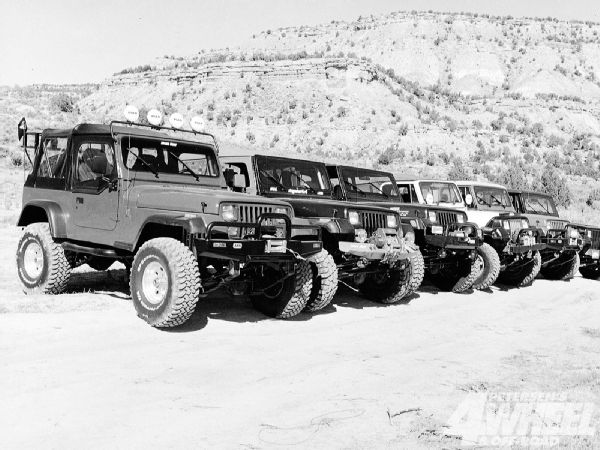
Tah-dah! Here it is, ladies and gentlemen, the Jeep that started all those nasty round-headlight jokes. This Builder's Guide zeroes in on the '87-'95 Jeep YJ Wrangler, the one with the rectangular headlights and the, well, slightly less than totally glowing reputation. There's no use in pretending it ain't so.

Some of that put-down humor might apply to stock leaf-sprung Wranglers. But a whole passel of inventive aftermarketers has been hard at work for years developing tons of trick upgrades for the YJ, and they've created about a zillion ways to make the jokesters eat their words.
In fact, there are so many parts from so many sources that space forces us to concentrate on only some of the ones that enhance the YJ's off-road performance. We'll look at spring-under suspension lifts, spring-over conversions, and shackle reversals; engine and axle upgrades; and simple ways to improve stock suspension flex. We'll cover the related modifications you must do when you lift a YJ or run bigger tires.
PhotosView Slideshow
























